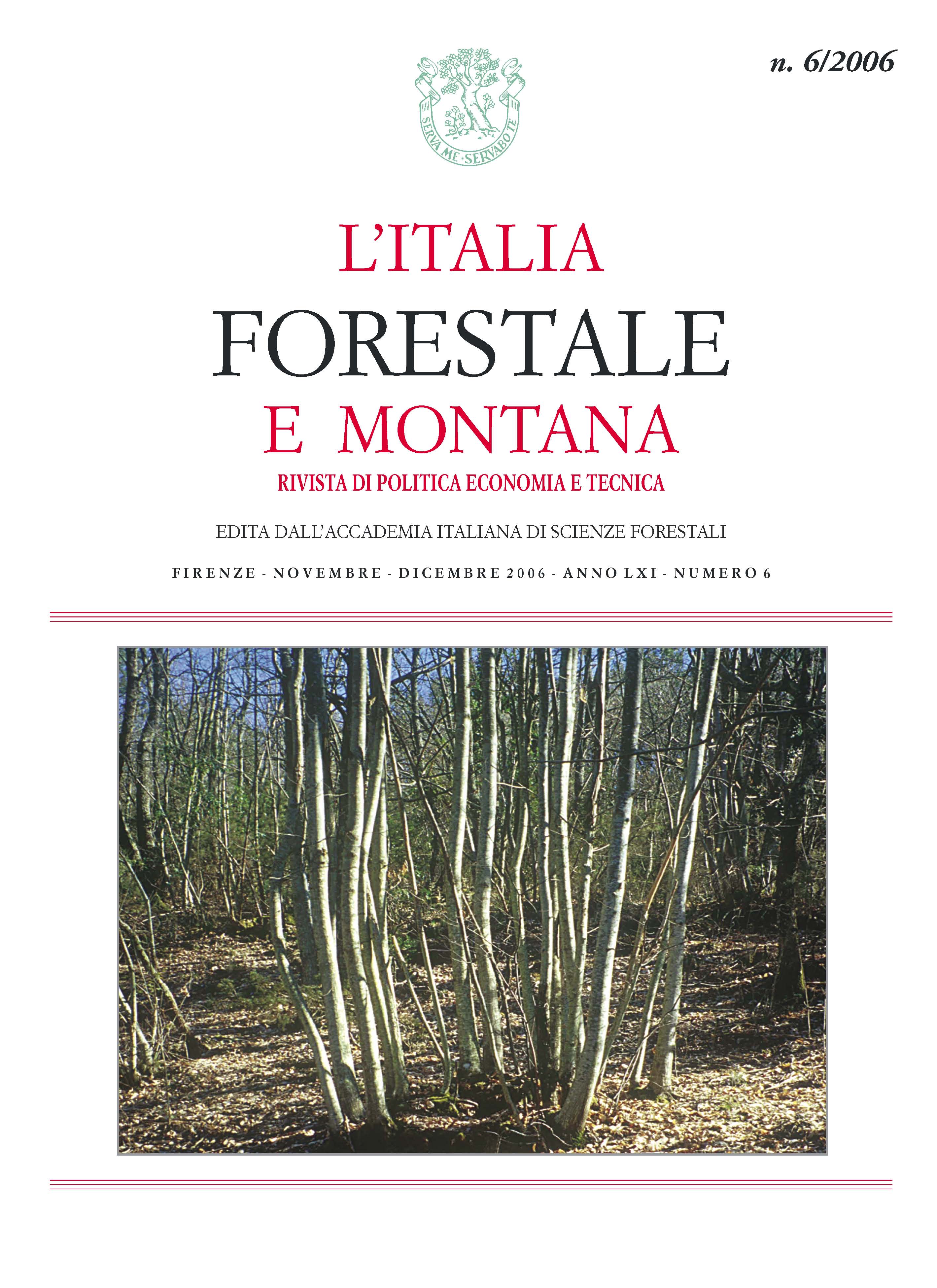Articles
Impact of coppicing on soil losses in chestnut coppice stands in the Catena Costiera Cosentina (Calabria)
Published 2006-12-09
Keywords
- distributed analysis,
- factor C,
- GIS,
- erosion hazard,
- USLE
Copyright (c) 2006 Italian Journal of Forest and Mountain Environments

This work is licensed under a Creative Commons Attribution-NonCommercial 4.0 International License.
Abstract
Coppicing in chestnut stands often concerns large areas, thus affecting hydrological processes and soil erosion. Moreover, the juxtaposition of diverse size and age clearcuttings creates a mosaic wherein each patch can contribute differently in the hydrological and erosion dynamics of watersheds. Within these topics, an investigation focusing on quantifying the amount of soil losses was carried out in a forested watershed, in the Eastern slopes of the Catena Costiera Cosentina (Calabria, South Italy). The investigation approach was based on the application of the USLE (Universal Soil Loss Equation) and the further distribution analysis of erosion through a GIS. The aim was to assess the compatibility between the present coppice exploitation system and soilconservation.
Results showed that the type and degree of forest cover variability are the main factors influencing soil losses. However, the present coppicing regime, in terms of single felling area and spatio-temporal distribution, does not seem to significantly affect the anti-erosive action of the investigated stands. Moreover, the impact of the abrupt soil cover changes is short and transitory, as within three years the stand cover usually restores its full effectiveness against erosion processes.

